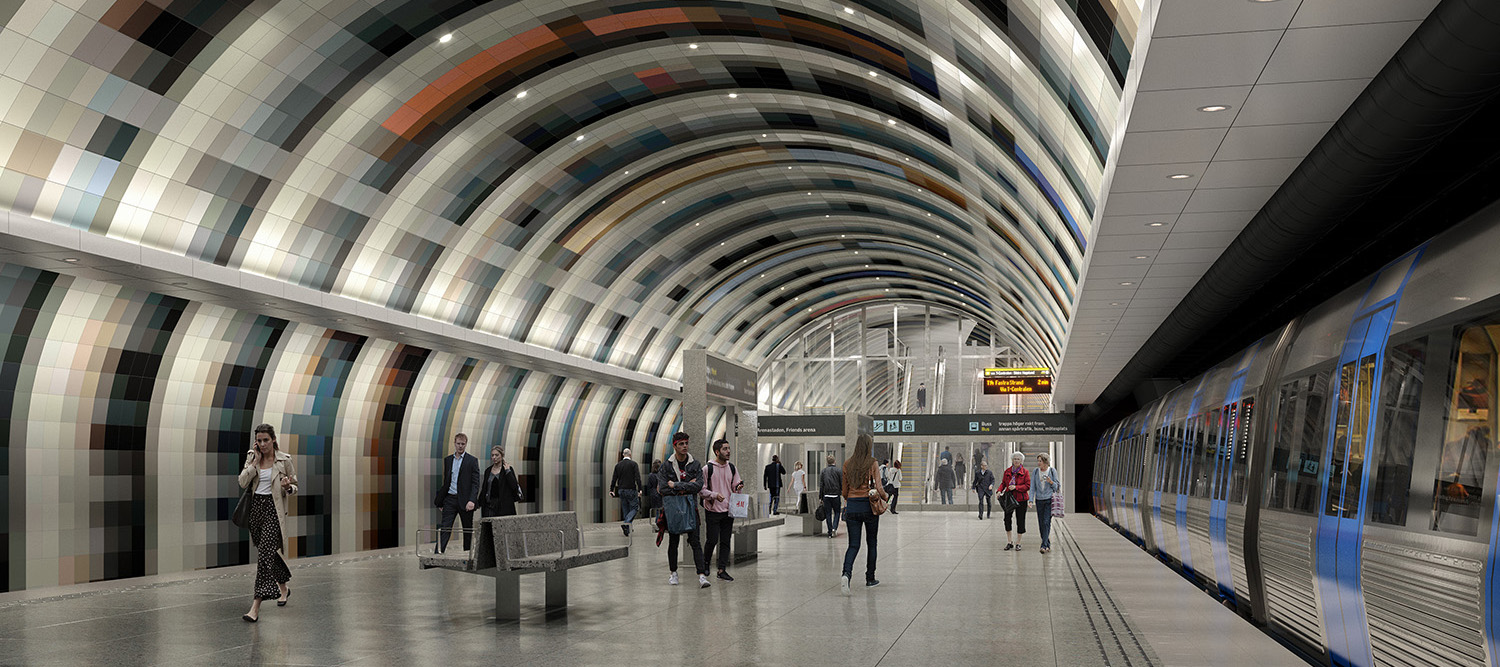A collaboration that strengthens KTH Royal Institute of Technology and Region Stockholm

Neither KTH nor Region Stockholm is planning to move from where they are, says Daniel Jonsson, a researcher at the Division of Transport and Systems Analysis as well as Partner Director Traffic and Region in KTH’s strategic partnership with Region Stockholm. Therefore there is no end date to the collaboration.
However, the formalized collaboration is quite recent. It wasn’t until 2015 that the current partnership agreement was signed. Since then KTH’s and Region Stockholm’s managements meet annually, two steering groups meet more often and the Partner Manager is in frequent contact with the region. The collaboration has become the main point of contact between two organizations, whose size can make them difficult to navigate.
“It has become easier to find the right person in the organizations”, says Daniel Jonsson. “And that facilitates different kinds of exchanges. One example is the Public transport administration, which welcomes many students working on their degree projects, who examine things the Public transport administration doesn’t have time or opportunity to do. They also contribute to the teaching, and I think they would like to do even more. That is something we are working on.”
Daniel Jonsson would also like to see more people exchange and life-long learning. So far there is one affiliated faculty and one more is underway. There are also plans to further the education of professionals in the region and the City of Stockholm. Either as tailor-made courses, where experts from the region and the city could also contribute as teachers, or where region employees can participate in regular courses at KTH. Life-long learning is one area where KTH is expected to do more.
Call for proposals in urban and traffic planning in spring
A special aspect of the collaboration is that the region is a public organisation with funding of its own. That shows concretely in an annual, KTH-internal call for proposals in urban and traffic planning. Each project can receive up to one million kronor per year, during two years, and since the call is only open to KTH researchers it is a great opportunity to research very concrete challenges. This year’s call opens on 14 April and the last application date is 9 June.
An important part of the steering group’s work is to formulate the region’s knowledge gaps into research questions. A challenge lies in finding a common language and seeing how research can contribute to urban management.
“A concrete example is precisely what public transport will look like after the pandemic. It is a source of concern for the region who wants to know how the traffic should be adapted and if the traffic should be managed differently in the future”, explains Daniel Jonsson. “They can either make their analyses with existing models, perhaps helped by a consultant, but another option is to research the issue and ask questions like ‘how have habits changed?’, ‘How can you influence people’s future behaviour?’”
Since research is a long term endeavour it is important to get the questions early on to make the knowledge available when needed, for example as a basis for a regional plan. The collaboration with the region offers an opportunity to work strategically to identify the needs in an early stage. KTH can also help the region to identify what new knowledge would be valuable.
Open dialogues make for better applications
Daniel Jonsson would like to see more good applications to the region’s calls. To achieve this they have arranged dialogue meetings about the calls’ topics with participants from the region and KTH.
“It has been a very good method to bridge the problem with translating between the organizations. The meetings have led to better applications and they could also lead to larger applications to e.g. Digital Futures.”
The meetings during the last two years have been digital but Daniel Jonsson hopes, and believes, that the meetings will be physical this time. Anyone interested in taking part in a meeting is free to contact him.
Research project about synthetic populations
Daniel Jonsson has himself received a research grant from the region for a project about synthetic populations, a kind of digital twins or make-believe households mimicking the real population.
“The idea is to simulate activities and movements in the transport system at an individual level, without using real people, with the help of machine learning. You get the same benefits as from index data without having to manage integrity issues. The system will also be able to forecast and simulate events, e.g. how many ambulance calls can be expected in different areas and what will be the effects if different categories of people move to a new area. It will be part of the region’s toolbox that can contribute to a better city.”
And it’s here, in the concrete contribution to urban development that Daniel Jonsson finds his motivation. His research consists in finding better methods to get bases for urban planning and urban development. But in a collaboration where the other party is a municipality or a region you can’t use the same model as with a commercial entity, where it is easier to measure results in new products. Therefore the challenge lies in finding other ways to make research, as well as education, be of value to society. Because, as Daniel Jonsson concludes:
“There is much to gain from e.g. furthering the education of the administration, it will not be highly visible but it has a concrete, silent effect. We want the public sector to function as well as possible and KTH can contribute with one of the things we do best, to educate.”
Text: Johan C Thorburn
This is the 27th article in the School of Architecture and the Built Environment 's series of articles on selected research, education or collaboration initiatives from each department. You can find the previous articles here: Archive
